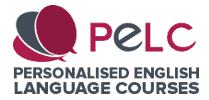“I need to speak English fluently in three months” – can you help me?
I occasionally receive messages from students who expect me to produce a miracle by training them to speak fluent English in three months.
During a free consultation meeting, I typically tell students that I am not a miracle-worker and that they shouldn’t set unrealistic goals for themselves.
To be frank, rushed attempts to learn foreign languages usually end in disappointment and abandonment.
In this post, I assess what it means to be fluent. I also describe what English language learners can do to ensure that they make steady progress with the language and enjoy the language learning process.
WHAT DOES IT MEAN TO BE “FLUENT” IN A LANGUAGE?
Typical definitions of fluency on the Internet tend to point towards “speaking a language quickly without any hesitation.”
Well, such a definition is off the mark for a few reasons. Firstly, I have met quite a few English language learners who spoke like speed trains. However, they had absolutely no control over grammar and intonation, while their vocabulary and collocational knowledge was extremely limited.
When it comes to hesitation, it can be very context-dependent. Sometimes, language learners hesitate because they can’t recall words or grammatical structures. They might also stumble on their words because they have little, or no, knowledge or interest in the topic being spoken about. Even native speakers of a language hesitate!
So, what does it mean to be fluent in a language?
If I had to nominate traits which I believe encompass spoken fluency in the English language, they would be:
1. The ability to retrieve a wide range of vocabulary, collocations, phrasal verbs and grammatical structures suitable for spoken fluency in a range of contexts.
2. The ability to reduce vowel sounds in prepositions and function words to schwa. Function words are almost never pronounced in their full stressed forms.
3. Being able to maintain a steady tempo when speaking, so that one’s control of grammar and word choice do not go astray. There is no need to rush.
4. The ability to use transition words and phrases to link words, phrases and sentences. For example, as well as, and, at the same time and in order to are all transition signals.
5. Having the capacity to use features of connected speech. These include vowel to vowel glides. When a word ends with a vowel sound and the next word begins with a vowel sound, we link the words with a Y or W sound.
MY PERSONAL EXPERIENCE WITH LEARNING THE SERBIAN LANGUAGE
Despite always being naturally talented when it comes to words, memorisation and learning languages, it was still a tall order for me to become “fluent” in Serbian in three months.
From the get-go, I was surrounded by the Serbian language and Serbian people all day, every day. Very few people in my wife’s immediate family knew English. Therefore, I was completely “immersed” in Serbian from day one.
I also had an appreciation of the need to hone my own language learning strategies. For instance, my Word-Phrase Table helped me to record new words, collocations and personalised sentences. Of course, it was vital that these personalised sentences contained these words and collocations.
Overall, I can't claim that I became fluent in Serbian after three months. However, I believe that I was a confident and communicative speaker after six months.
SO CAN you SPEAK FLUENT ENGLISH IN THREE MONTHS?
For the average employee with a tonne of duties and kids, no.
You can learn collocations and phrasal verbs, as well as get to grips with some useful grammar structures. Moreover, it's worth listening to TED talks and watching films. However, you won’t speak fluent English in three months through self-study and taking private lessons.
The five-point plan for spoken fluency that I outlined in the previous but one section is probably stricter than the criteria which many teachers and polyglots come up with. Nevertheless, there's a good reason for that …
Far too many teachers and language learning gurus on the Internet promise the impossible.
Hence, when it comes to fluency, I do my best to explain to students what being fluent actually means.
There are exceptional people who can reach a high level of fluency in three months. One such example is Benny Lewis, founder of Fluent in 3 months. Benny moved to several new countries with the aim of speaking local languages fluently.
But what about the average Joe who sits in an office for eight hours, does overtime, has kids, doesn’t have time to do any homework and is not interested in adopting and persisting with any language learning strategies?
I usually tell new students that achieving fluency is 90% down to them. If they are willing to put in the work, personalise new words and collocations and have short interactive classes with me every few days, they WILL make rapid progress.
Can students speak fluent English in three months if they take classes with me?
It’s unlikely.
However, those students who follow my advice, show up for conversation-based classes regularly and devote time to working on their language learning strategies, all seem to achieve an impressive level of spoken English six months after their first class with me.
Conclusion
Individual circumstances matter most when it comes to being able to speak fluent English in three months, six months or whatever the time frame is.
For example, when it comes to the learning of Polish, an experienced language learner and teacher of a foreign language who takes a sabbatical to live among Polish people for 12 months, will obviously fare better than a stressed businessman who lives in a tiny Australian town, using the Internet as his only source to learn the language.
In summary, I can help people who want to speak very good English, but I never promise the impossible. Speaking English fluently is 90% down to the individual. As a teacher, I can only provide learners with encouragement, language learning strategies, advice, high-quality materials and my complete willingness to listen to their speech in order to help them improve.



